In this article: Learn about the 18 common goat breeds to raise on your farm or homestead.
So you have made the decision to add goats to your homestead, but before you run out and purchase the first goat you find you will need to decide which of the goat breeds you will be raising.
This site contains affiliate links. If you make a purchase using one of these links, I may earn a commission. Please see my disclosure page for more information about cookies collected and our privacy policy.
Deciding on a breed will be based on what your ultimate need for a goat is. Consider the following questions:
- Are you looking for an animal to provide milk, meat, fiber or a combination?
- How much space can you devote to your goats?
- Do you just want a pet to eat the weeds and brush on your property?
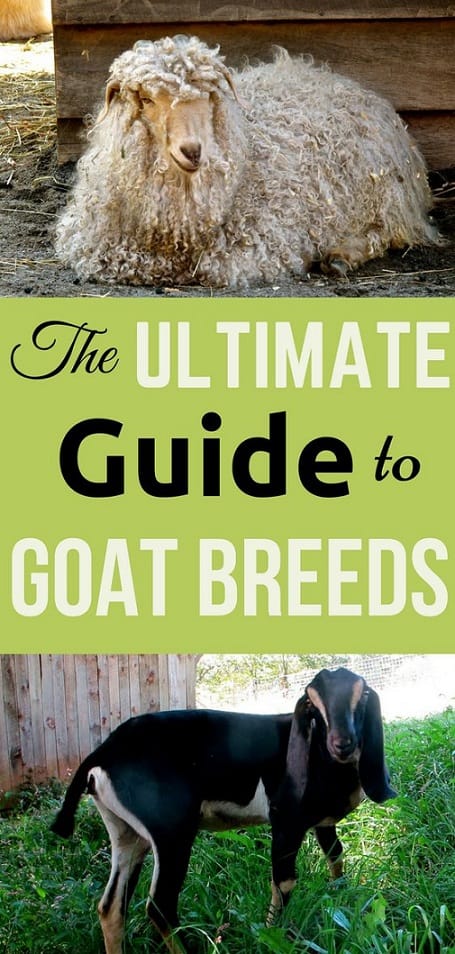
The Ultimate Guide to Goat Breeds:
Before we get to the goat breeds, let me mention that if you new to raising goats, knowledge is the most important thing you can do to prepare.
Be sure to check out my Quickstart Guide to Raising Goats to get an overview of everything you need to know before bringing your goats home.
Dairy Goat Breeds:
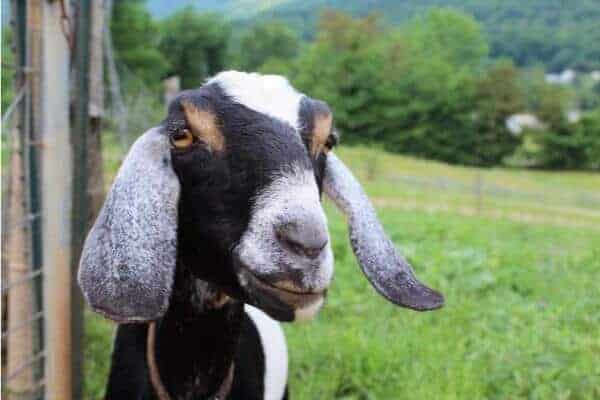
Nubian:
The Nubian goat is one of the most popular large dairy goat breeds- and my personal favorite. They are easily recognized by their long floppy ears which are oh so cute!
Also called Anglo-Nubian, these goats are a large breed standing at approximately 30-35 inches tall at the withers and weighing 130-175 lbs.
Nubians are average milk producers. Their milk is also known for it’s high butterfat content- about 4-5%- which makes their milk excellent for making cheeses, ice cream, and soap.
Nubian goats are considered an all purpose goat breed, used for both milk and meat. They are also well suited for hotter conditions and have longer breeding seasons than other most other seasonal breeders.
Compared to other goat breeds, Nubians are a somewhat of a crybaby and have a habit of being pretty loud- so if you live on an urban farm, make sure your neighbors won’t mind the noise before choosing this breed!
Saanen:
Saanens are a medium to large goat breed that originated in Switzerland. They have the ability to produce a lot of milk- up to 3 gallons per day and are often said to be the “queen of the dairy goats”.
Compared to other dairy goat breeds, Saanen milk tends to have a lower butterfat content making their milk better suited for fresh drinking.
Saanens are usually all white in color and very mild mannered. They are medium to large in size, weighing about 150 lbs. Due to their white hair and skin, saanens are sensitive to sun and should have ample shade in their pastures.
Compared to our other breeds, I would say that the Saanens were the most stubborn when it came to escaping and were definitely the ones who tested the fences the most- one even jumped a 4 ft chain-link fence and learned how to come into the house through our dog door!
Related Reading: Must Have Supplies for Goat Owners
Alpine:
French Alpines are a medium sized goat breed that originated in France. They are a steady, dependable goat and are very consistent milk producers with one of the longest lactation cycles.
Alpine goats range in size from 30-40 inches tall and 130-170 lbs.
French alpines are great milkers, and often have the highest production of any goat breed. Their milk contains an average of 3.5% butterfat.
Alpines come in almost any color imaginable and are adaptable to almost any climate.
Oberhasli:
Also known as the Swiss Alpine, the Oberhasli is a medium sized goat. They are a very sweet and quiet goat breed with good milk production of up to 2 gallons a day.
Oberhasli’s are chamois in color, meaning they are brown with black markings on their faces, backs, and legs.
There is some controversy when it comes to the taste of the milk- some argue that it has an offensive aftertaste and some say it’s is sweeter than most.
We’ve only even owned a Saanen/Ober mix as a milker, but her milk was much sweeter than her full Saanen mother’s milk. I would suggest trying milk from the goat or mother of the goat you are planning on purchasing- just in case. For years our herd sire was an Ober, and he was the sweetest buck in the world.
LaMancha:
LaManchas are a medium sized goat that are most easily recognized by their lack of ears! They have a friendly, easy going temperament and are very hardy animals.
LaManchas are good producers with an average of 1-2 gallons per day, with one of the highest butterfat content of standard dairy goats. Their milk is perfect for soap and cheese making.
Personally, I like floppy ears, but I have heard many LaMancha owners say that if you give them a chance you’ll fall in love and be hooked on them forever!
Golden Guernsey:
The Guernsey is a heritage goat breed that is trying to be recovered here in the US. They have beautiful long, golden coats and are known for their efficiency, production, and smaller size.
They have higher milk production with less feed intake than some of the other major dairy breeds with a very docile nature.
Toggenburg:
The Toggenburg is a medium-large dairy goat with high milk production. A Toggenburg is the currently world record holder for the most milk produced in a year with over 1000 gallons!
They are calm and affectionate and I think they are one of the most beautiful goat breeds. Like the Oberhasli, there is some arguments when to the taste of the milk.
Myth or fact, you may want to taste the milk of the doe, or her mother, before you purchase to test for yourself.
Want to know more about dairy goat breeds? Check out my Top 5 Dairy Goat Breeds for the Small Homestead!
Meat Goat Breeds:
Boer:
The Boer goat is the number one option if you want a goat for meat. They are bred for growth and reproduction and can consistently produce more muscle in less time than any other breed.
They are easy to care for and they often earn their keep by the amount of forage they can consume.
Kiko:
Kikos are known for their hardiness. They can gain weight without a lot of supplemental feeding and have great reproductive health.
Kikos have shown to be adaptable to most any living situation and give a lot of meat for the amount of money you put into them. This goat breed is relatively new in the United States but are gaining in popularity.
If you are new to goats, I recommend reading up as much as you can before you purchase. You can find a lot of articles here on The Free Range Life that will teach you about goat care and be sure to check out The Busy Homesteader’s Goat Management Binder– it’s full of to-do lists, checklists, record keeping sheets, and resource pages that will get your new goat herd off to a great start!
Myotonic:
This breed has a few different names, one of which is the Tennessee Fainting Goat. These animals are very muscular and meaty.
They get their name from a recessive trait that they carry called myotonia. This means that when they get startled their muscles lock up causing them to topple over or stand still like a statue for 20 seconds or so.
Myotinic goats will grow to about 25 inches tall and weigh 174 pounds at full weight.
Spanish:
Brought into Mexico and Texas from early Spanish settlers, this goat breed is bred to be very meaty yet also very hardy.
Due to their rugged environment have been shaped into tough animals that are able to survive and thrive under adverse conditions
Nubian:
As I stated above Nubians are most widely known for their dairy capabilities, but also have the potential as a meat goat.
Many breeders keep the does for milk production and the bucklings are used for meat making Nubians a good dual purpose breed.
Fiber Goat Breeds:
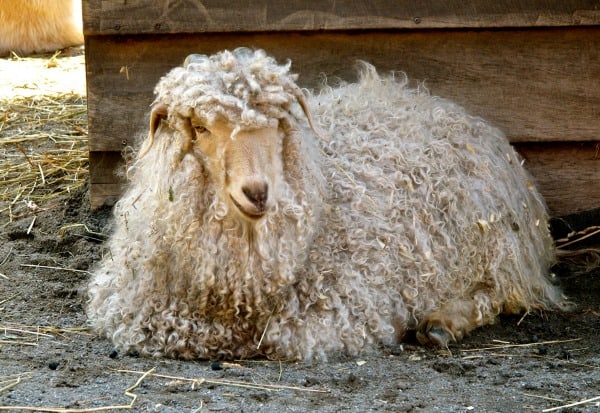
Angora:
Angora goats have long, soft hairs called mohair. These goats are mostly white in color, which makes their fiber easy to dye.
Adult goats give between 8 and 16 lbs of fiber a year.
They aren’t quite as hardy as your meat and dairy goat breeds, so make sure you have a good shelter to keep them warm and dry.
Pygora/Nigora:
These are crosses between Pygmy/Angora and Nigerian Dwarf/Angora. By mixing these breeds you can introduce new fiber colors as well as produce a smaller goat that might be more manageable on a small sized farm.
You can expect up to 4 lbs of fiber a year from these mini-fiber goats. And Nigora have the benefit of being dual fiber/dairy goats.
Kashmir:
In the US, Kashmir, or Cashmere, goats are not technically a breed but a type of goat that has been bred for the correct quality cashmere coat.
Kashmir goats are more hardy and can be dual purpose fiber/meat animals. It can be tricky to breed the correct fiber though.
Related Reading: How to Keep Goats on a Small Lot
Mini-Breeds:
Nigerian Dwarf:
The Nigerian Dwarf is one of the top goat breed choices for those homesteading on a small piece of land. They can give from 1-2 quarts a day- which is pretty impressive considering they are only around 18 inches in height!
Their milk is also one of the highest in butterfat which ranges anywhere from 6-10%. That means their milk is very creamy and makes delicious cheese, ice cream, and yogurt.
Because of their size they make great goats for kids as well as those in a more urban setting. Another plus is that they can breed year round, which means you can stagger your breedings to keep you in milk all year long.
Pygmy:
Pygmy goats are very similar to Nigerian Dwarf goats in size, but tend to be more muscular and stocky.
They are more efficient browsers and give a decent amount of milk per day (though usually for a shorter length of time).
They are a good all-purpose goat for brush control, pet, meat and dairy. They can also be bred year round.
Mini-Crosses:
This is not a specific goat breed, but many breeders are now breeding their full sized does with a Nigerian Dwarf/Pygmy buck to create smaller versions of your favorite breeds. Mini-Nubians, Mini-Manchas, etc.
These breeds offer the best of both worlds when it comes to those who want a smaller sized goat yet want more options than a Pygmy or Nigerian Dwarf.
Kinders:
Kinders are not quite a small as Nigerian Dwarf goats- their size is somewhere in the middle of a Nubian and a Nigerian. They are a dual purpose breed for meat and milk.
This newer breed is gaining in popularity for the small and urban homesteader due to it’s year-round breeding, quality milk, manageable size and easy-to-milk teats.
They are said, by those that own and breed Kinders, to be the only truly perfect breed that will meet all of your needs.
These are not ALL the goat breeds, but most of them. We started with Saanens and now raise an all-Nubian herd, but we plan to add some Angora (fiber) and Nigerian Dwarf (for winter milk) in the near future! If you raise goats, what is your favorite breed? If you are still looking- what breed are you leaning toward?

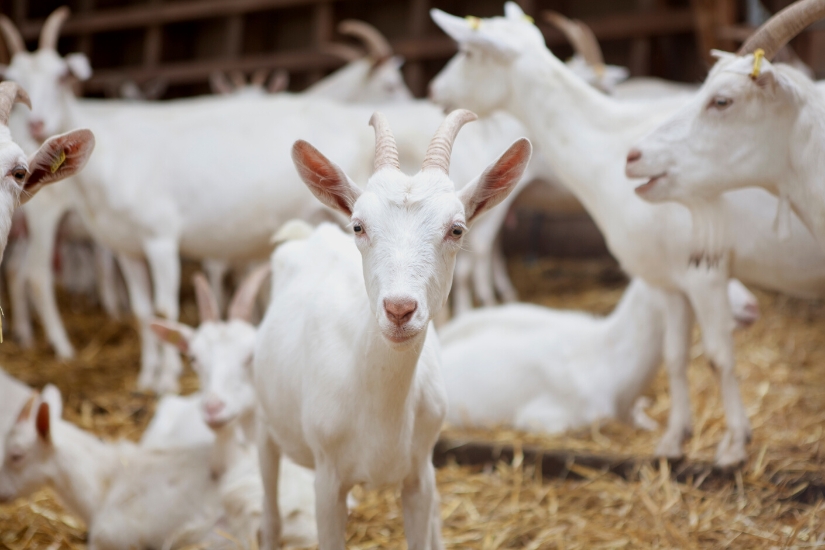
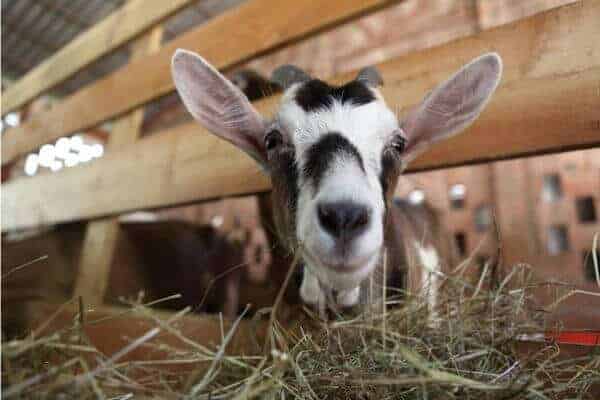
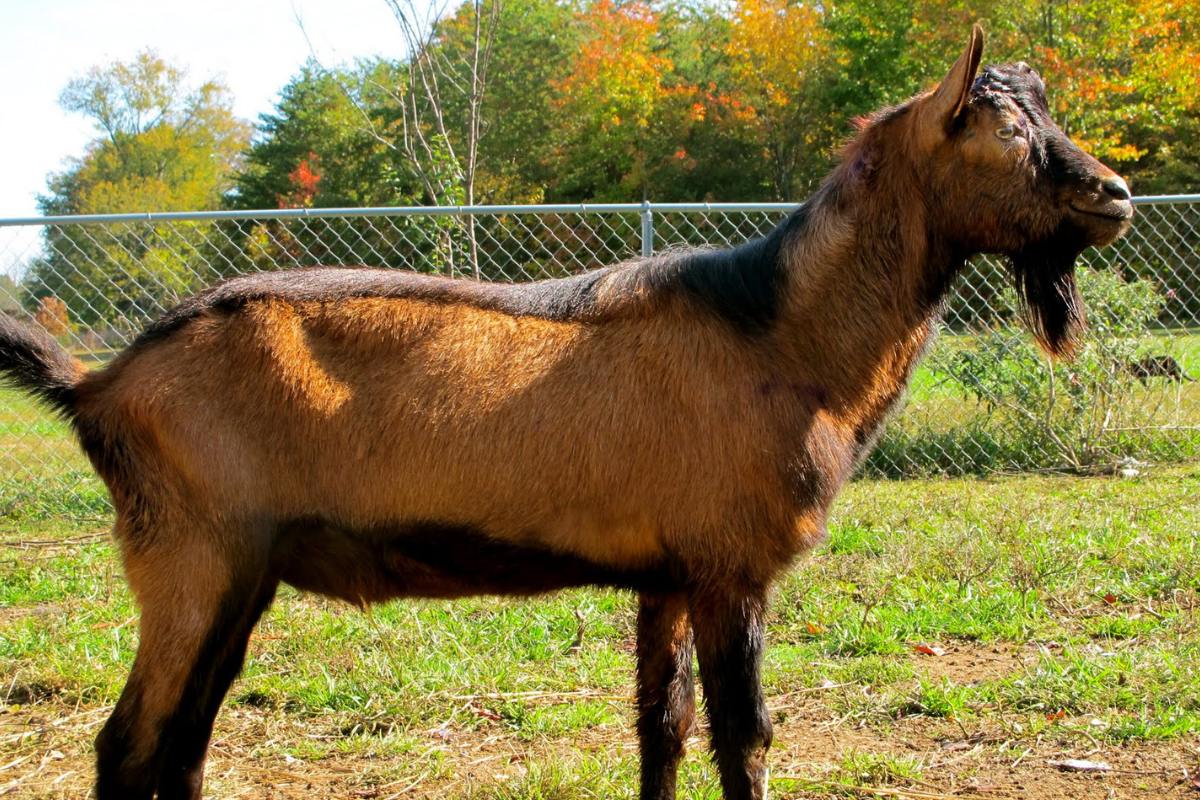
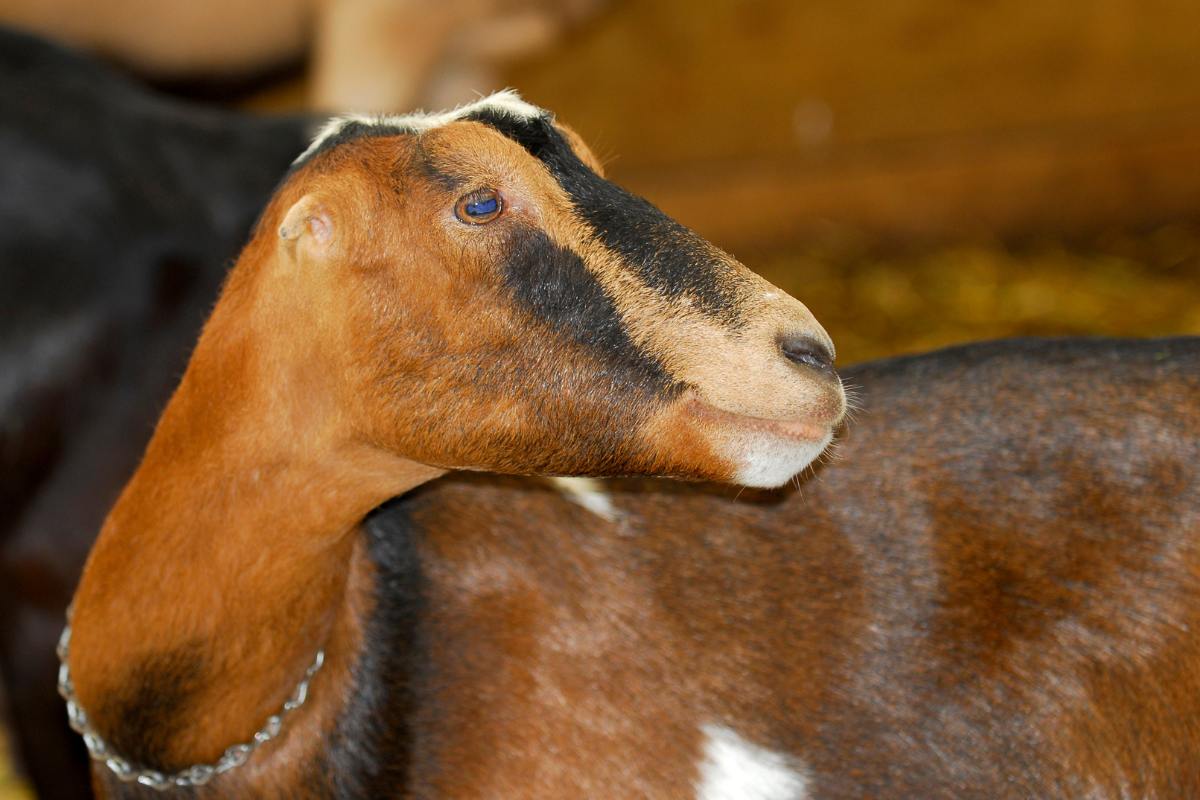
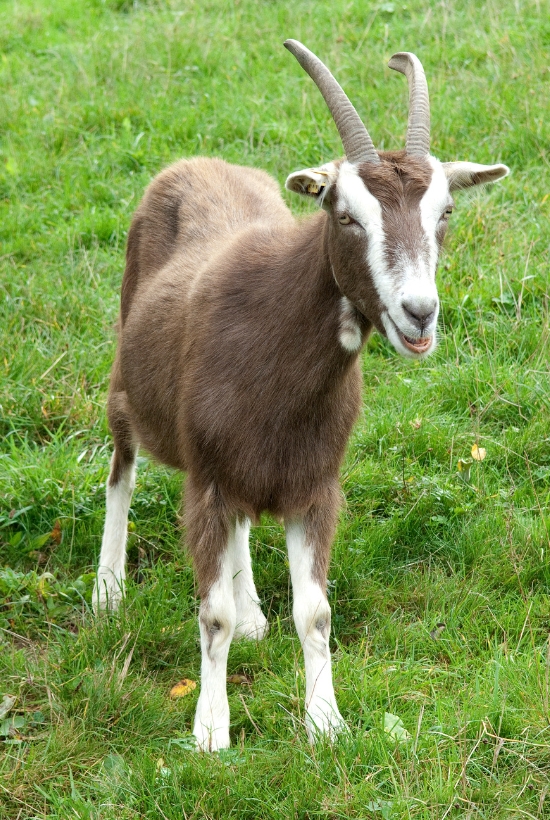
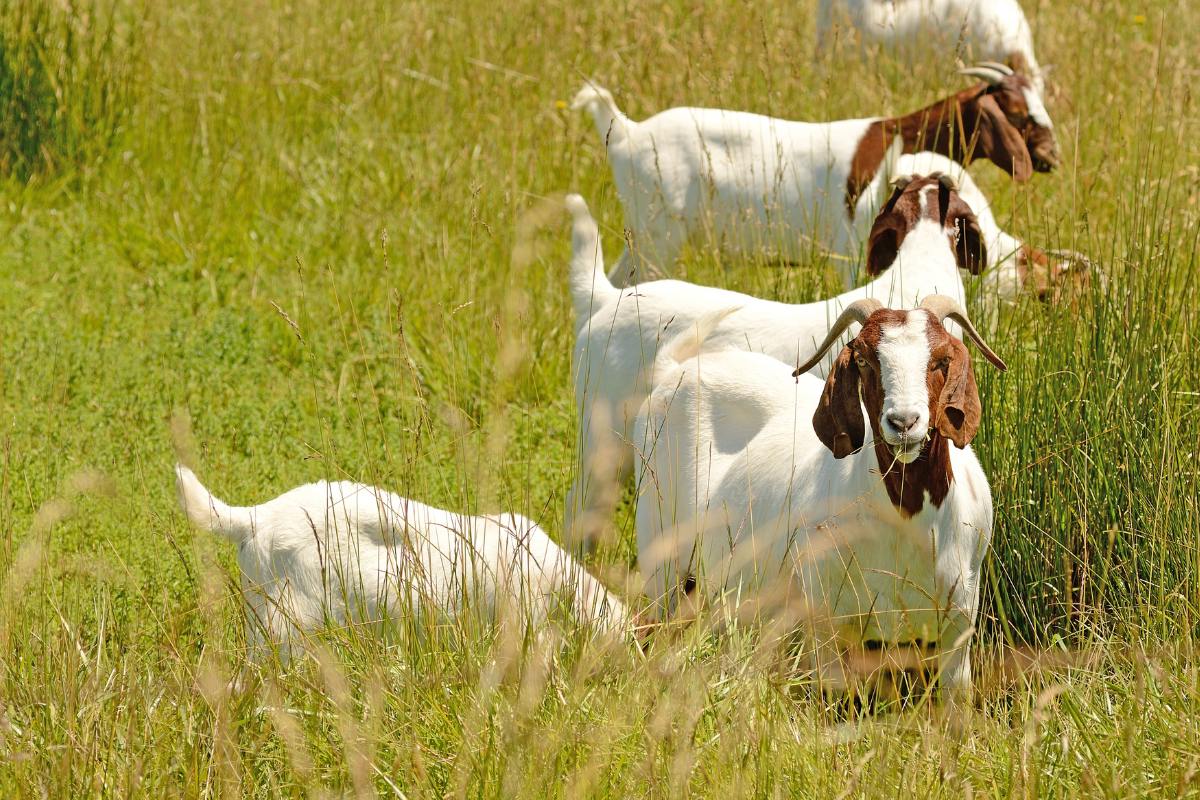
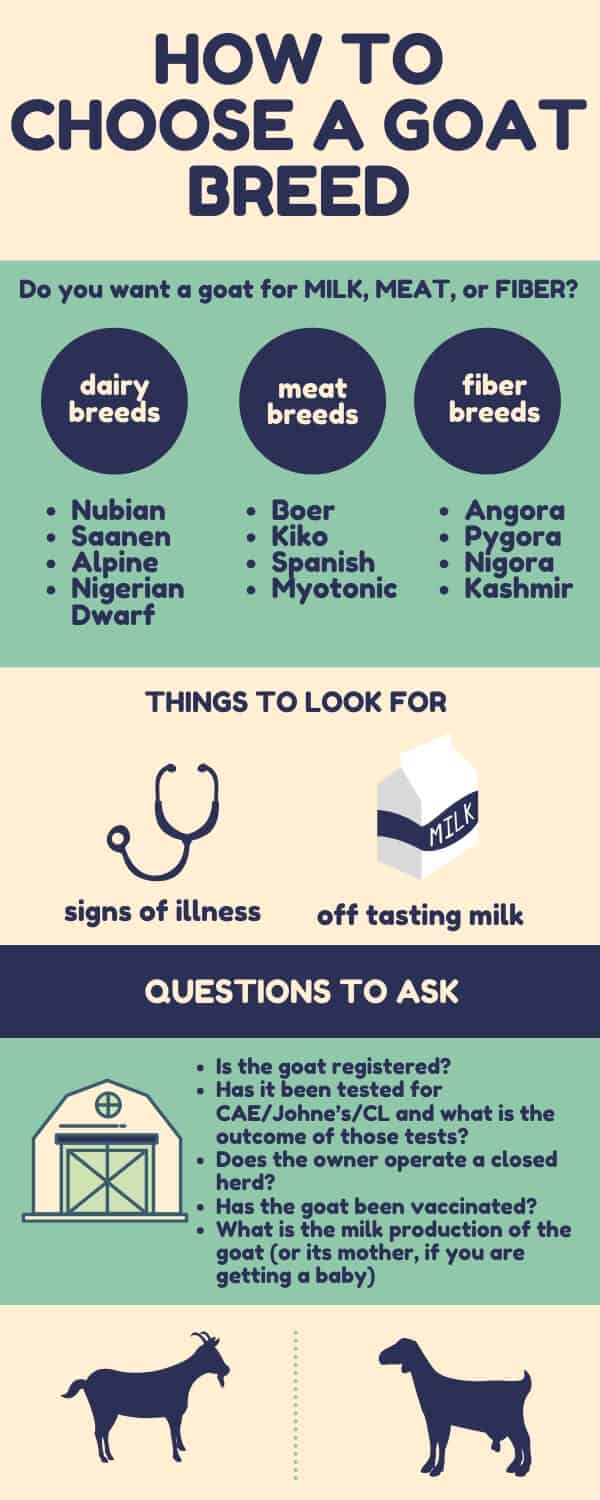
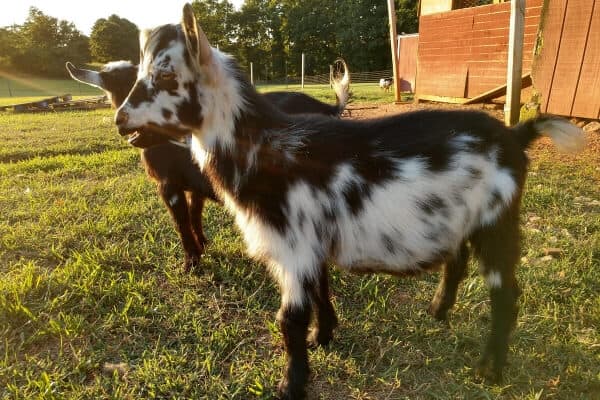


I’m impressed! I didn’t think you would have the Kinder breed listed since most people don’t even seem to know about them. I raised Nubians for years before I changed over to the Kinders. They are definitely my breed of choice since they have proven to be so healthy, friendly and the milk is superior.
I am researching for the future use of goats and honestly how could you not want a couple of each one? Yes, I know..start small and build slowly but I can’t wait to get started. I believe the milk of the future will be goats milk over cows milk. The Industry has its way for now but I do see a drastic change coming as more people become self-sufficient and educated. Good Luck to all who are wise enough to raise goats! Soaps, Cheese, Yogurt, Milk, Fiber is well worth owning goats!
True, if I could I would have some of all of them!
It would have been nice, as someone new to goats, and not yet owning any, to have the photos labeled as to the particular breed. Or better yet, a photo of ALL the breeds you listed, next to their description. I have limited space, and am considering goats.
Thank you for your article it was helpful.
I have a micro urban farm in my backyard in the city. I started with LaManchas because of the claim that they are one of the quietest goats and I live their ears. My goats have long consistent lactations. I am in the process of breeding to Nigerian Dwarfs to convey to a Mini-Mancha herd.
I have Oberhasli goats, great website! They are definitely my favorite, I have bred them with a 50/50 alpine saanen, and have gotten the most adorable little doe with the sweetest personality, Her coloring is very beautiful.
Very informative.
Thank you.
Researching goats for milk and fiber.
We have an angora buck and we breed it with our Nubian female. What do you call that cross breed?
Most people raising the cross call them Nugoras.
We have had goats for 25 years, starting out with Angoras, then Boer/Nubian crosses, Kikos and currently our herd is Myotonics with an Alpine doe yearling. We got our first Myos in 2010 after spending a week with the breed on a large ranch in Texas. I love this breed. Not only are they less of a problem, in terms of management, than the other breeds we’ve had they have great personalities, are very friendly and affectionate, even the bucks. They are easy to train, are easy birthers and great moms. The variety of colors, patterns and hair length is not only fun, but helps me identify individuals out in the pasture. Their milk is great tasting, but their udders and teats can be small and hard to milk by hand, (hence our Alpine). So, if you don’t need a lot of milk and can make or buy a milking machine they can be dual purpose. Although we have never butchered any of ours, on average they have a 10% higher bone to meat ratio that other meat goat breeds, due to the muscular stiffening
Hi Everyone! Sarah, I am so impressed with your website and materials, and grateful for the time and effort you’ve put into everything. I am hoping to get more info on which goat breeds are good as pets and weed eaters. We have moved into a place with two acres of land that have been very neglected by the previous owners. The place looks like a jungle, hehe. Lots of blackberry bushes and overgrown vegetation between trees (mainly oaks and ever greens). My husband and I would love to have a few goats as both pets and helpers for cleaning the property up. What breeds are good for this purpose?
Welcome! Really any goat will clear your land- and I’ve yet to meet a goat that isn’t a good pet! I’d say if you don’t want to milk a wether (castrated boy) is the way too go. Boers clear land quite well- meat goats in general tend to clear very efficiently.
I just got my first 4 goats and am having a blast. They are so personable and fun to watch. I got Kikos and Spanish/Kiko crosses. I just love the unique horns of Kikos. Both are reputed to be very good brush eaters (which is my main reason for getting them) and good mothers. Thanks for your great information.
I inherited a herd of goats mostly miniatures. One of my males is half La Mancha and the other half ??? He is about six months old. About three months ago he was acting differently from the goats. He had the shakes and would fall to his knees, we cut him from the herd and isolated him. I gave him a good dose of mineral oil and a few days later he was acting like he feeling good again and we put him back in general population.
He is acting up again with the same symptoms. My neighbor was the one who told me to give him a dose of mineral oil thinking he was bound up. If he recovered before with the mineral oil I’m going to try it again. My question to you is what can be binding him up?
I give them hay and alfalfa mix and sweet Cobb. He was able to graze before but now the weathers turning and I have them in there stalls.
Please have a vet see this goat! Mineral oil is not fixing anything, that was coincidence. Don’t rely on a neighbor for such important issues- you need a vet.
What about the Sables?
Sables are the same as the Saanen, temperament wise, but they can’t be white of cream. According to the breed leader list they also don’t milk as much as the highest producing Saanens.
Can you spin the wool of the Toggenburg goat or don’t you recommend this?
Ruth
I’m caring for Dwarf and Pygmy goats for a friend. We are looking at getting Nubian and Saanen for milk and Boer for meat and cross breeding them so as to get the best of both meat and milk production.
Hi,
My son got me a Nigerian Duarf for my birthday. I wanted a goat to put with my horse (not at our house). She is so incredibly sweet and smart but so noisy. I am afraid to put her in with my horse, I would be devestated if he hurt her and there are coyotes up there. We have a vacant lot next to our house that has plenty of space but I’m worried about her noise bothering the neighbors. I’m sure if I get her a friend that would help but do you think that will make that much of a difference? Thank you for any guidance. Heather
Hi
please tell what do I do to became girl,s babies ? because most of the kid have been baby boys. With special thanks.
Hey! Great list! What’s the best breed for a brush eater? I have two alpines I picked up cheap to get started, and they’re adorable little pets! I’m looking for a tough breed to eat honeysuckle and weeds across our 55 acres of mostly woods. A large, not overly aggressive, but maybe just really tough goat. There are coyotes about. Any help is very much appreciated!
A kiko, kinder, or Spanish goat might work for you
I love goat am new ! But I would love to raise them for butter and milk what goats do you think ? I would like to keep them small don’t have a lot of land!
I’d live in a wilderness area in Minnesota where temperatures can get down to -20 F actual temperatures and -70 F with windchill for a couple days at a time. I would like a very low-maintenance breed which can take care of itself most of the time, ideally, including when it gets down to -20 F. Is there a breed that would work to keep weeds down in the forests near my home? I don’t care about getting wool or meat or milk from the breed, just weed control only.
Hello I have a small hobby farm with some goats that iv rescued or picked up at auction if I sent you pictures of them could you help me identify there breeds I have 3 that I’m totally unsure of there breeds
when can you stop giving a baby billy goat milk from bottle?
I have been hearing a lot about the Kalahari Reds for meat producing goats. They are supposed to be from Africa. I was wondering if you could give me any info on them.